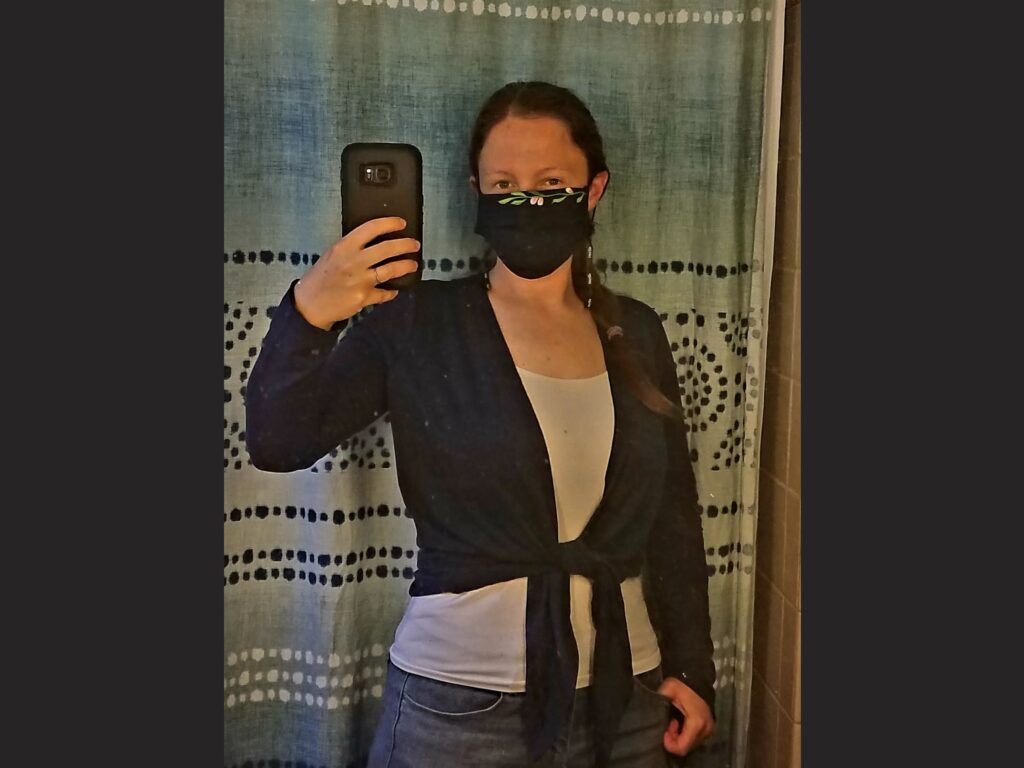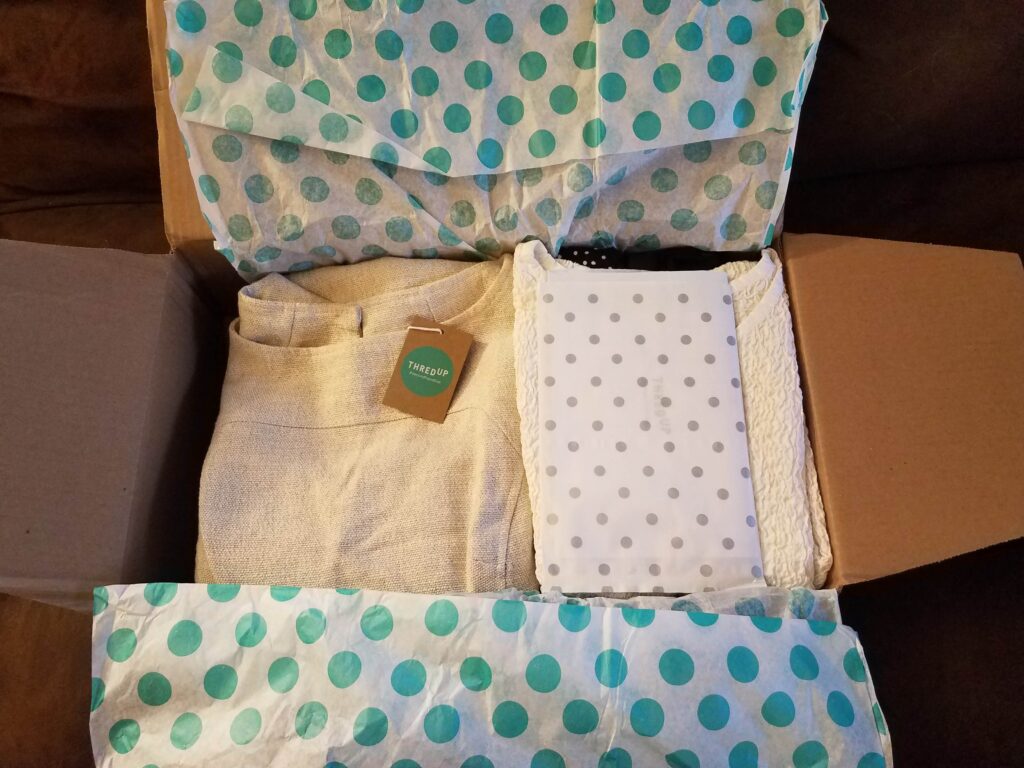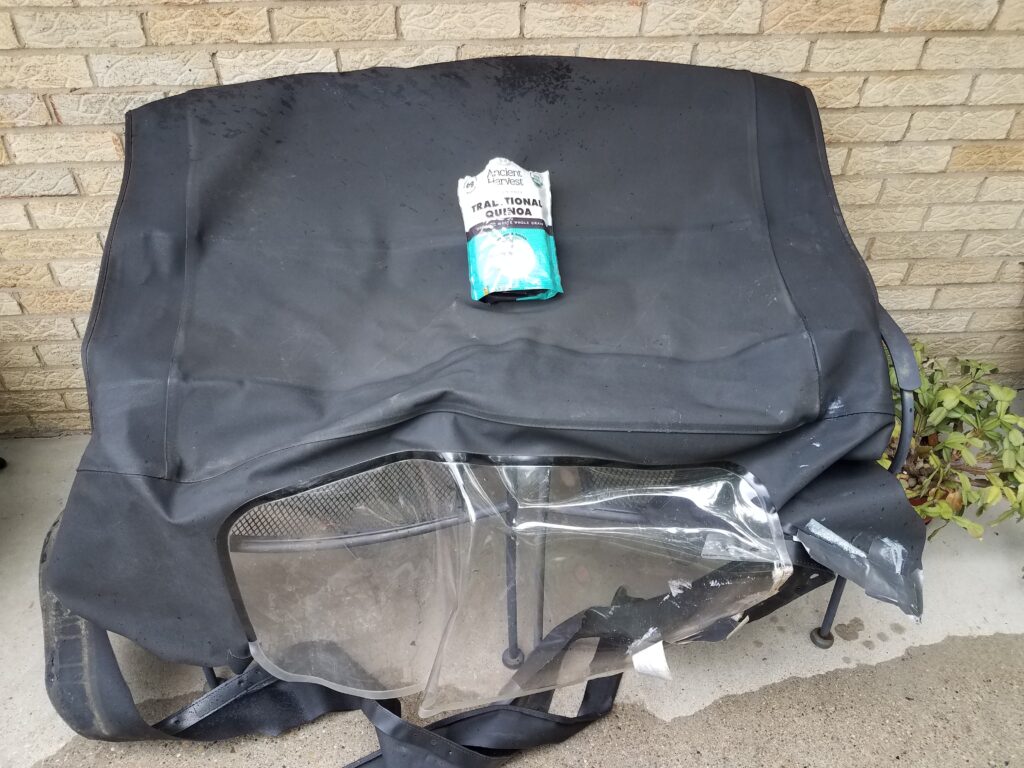Part 5 – Reducing Demand
We are now in August. My Plastic-Free challenge has concluded, but the Covid-19 pandemic has not. This final post in the series is related to responsible clothing purchases, so let’s start by bringing the conversation full circle to once again talk about masks. The New York Times recently did an exposé on forced labor of Chinese Muslims in meeting global demand for single-use personal protective equipment (PPE), particularly masks.[1]
As we look ahead to at least several more months of social distancing, it is worth mentioning that we should be examining supply chains for our own PPE choices, and supporting options for reusable masks that involve fair wages and safe conditions for workers – all it takes is a little bit of research. I recently bought some masks for my family from eShakti,[2] a company I have patronized for custom dresses in the past.
There will come a time, though, when the pandemic ends and we will arrive at whatever the new normal is. Over the last five months, I have been lucky enough to have a job, one that allows me work from home, not really worrying about my appearance. But when we return to the office, possibly in the early months of 2021, we will need something to wear. In looking to my own long-neglected wardrobe, I have considered how best to incorporate environmental responsibility into clothing decisions. Ultimately it comes back to the Three Rs: Reduce, Reuse, and Recycle (in that order).

Reusable cloth mask, sewn by workers receiving a fair wage (ethical supply chain)
Cardigan, a very rare new clothing purchase, no synthetics (Reduce)
Tank top, which I’ve owned for years and years (Reuse)
Jeans, a flattering and versatile thrift store purchase (Recycle)
I really cannot stand clothes shopping, and therefore, I still have clothing from college and a few pieces from high school. Fortunately good care has kept things from looking too worn, though some pieces are slightly more snug than they used to be. While my wardrobe includes a variety of natural fibers and synthetics, there are definitely very few pieces made purely from natural fibers. Most of my cottons involve a synthetic blend of some kind to keep the fabric stretchy (i.e. flattering).
Reduce
The easiest way to reduce plastic in our wardrobes is to reduce purchases of synthetic fabrics. With the goal of limiting my consumption overall, I’ve been learning about the concept of the “capsule wardrobe,” in which you reduce your wardrobe components to only what you love and what is essential.[3] (It’s very Marie Kondo in that way.[4]) The benefit here is that by keeping your wardrobe small with only high-quality pieces that all go together, you will shop less (which is great for me), spend less time deciding what to wear, and be kinder to the environment.
While I would like to simply reduce my wardrobe and just keep some things I already have, I don’t have a lot of truly versatile, sophisticated essentials that match the level of professionalism I want to display at my new job. Therefore, I very mindfully decided to try out a few items that serve that purpose. To do that, I selected three pieces from an online store called Indigenous.[5] The materials are organic and ethically sourced, and the workers are paid fair-trade wages. Understandably, ethical clothing does not come cheap. However, the dress I bought is understated enough to wear once every week or two in all four seasons. And although it’s 100% cotton, it’s a stretchy knit, meaning it is comfortable and flattering too. To that end, I would call it a good investment on several fronts.

The jeans and hoodie (not pictured) from my Alien costume are a little more versatile for everyday use than the items from my David Bowie outfit.
Reuse
If the whole idea of a capsule wardrobe is getting rid of things you’re not using and aren’t going to wear, something needs to be done with the clothes that don’t make the cut – and that’s where donations come in to play. What might not be one of your favorites may work well for someone else, and if you’re set on buying new (to you) clothes, one of the best things you can do for the environment is limiting the demand for brand new fabrics by buying used clothing.
I fully recognize that I am showing my privilege with the following statement: I always thought of thrift stores as a place to take clothing, not a place to buy clothing, except for Halloween costume components. Last year’s costume (celebrating the 40th anniversary of the movie Alien) required a pair of jeans and a hoodie that I wouldn’t mind ruining with fake blood. I was so surprised with the selection at the store (and/or my incredible luck) that the clothes I had selected with the intention to destroy in fact made it into my regular wardrobe after the corn syrup and food coloring washed out.
That Halloween costume experience was a good reminder to me that not only can clothes from the thrift shop be a good fit, but that buying second-hand can help reduce the pollution associated with creating new fabric. However, I still have the compounding problems of 1) no time to shop, and 2) avoiding leaving the house for anything but essentials during the Covid-19 pandemic. As if Big Brother was listening, an ad popped up in my Facebook feed for ThredUp, an online thrift store.[6]

Normally I would not be interested in sorting through the tens of thousands of items they have listed on their site, but they have just started offering a service where a stylist selects pieces for you based on your sizes and responses to a style survey. My first box arrived right before I wrote this post, containing 10 items to try. It was $10 for the service, and I didn’t have to pay for anything I didn’t want to keep. They sent a return label, and I took the box with undesired items back to the post office.
Recycle
As we determined last week, clothes do not last forever.[7] Indeed, they wear out more every time you wear and wash them, but they usually don’t wear out everywhere at once. If you know how to sew or know someone who does, you’ve got the option of repairing a functional piece of clothing or repurposing a good piece of fabric into something else. Another online company that came across my feed several years ago takes old pieces of sari fabric and makes skirts out of them. The company is called Darn Good Yarn,[8] and they sell yarn (as the name would suggest) but also skirts and accessories. There is usually a sale going on where you can buy three for the price of two, five for the price of three, etc.
As I mentioned last week, I don’t like to buy silk because of the cruelty issue, but I also recognized that it would be going to the landfill otherwise. Although it wasn’t a fabric I would normally purchase, it made sense to give it a new life. Also, for every skirt purchased (at least when I bought mine) the company made donations to victims of domestic violence. That was enough for me to justify a silk purchase or three.

Here lies my old roof, with all the other plastic I used (but didn’t purchase) during the month for scale.
Month in Review
I was mostly successful in not contributing to demand for any new plastic in the month of July, with the exception of cat medicine for Siegfried and a Covid-19 nasal swab for myself. Unfortunately my attempt to keep all plastic items that I used up (containers, wrapping, etc.) to a minimum was dashed when my car roof developed a sizable hole that could not be repaired. The old roof was too big to carry around with me, so going by the rules I set for myself, I officially failed in the last few days of the challenge. Christian asked if I wanted him to wait until August to replace the roof, but that seemed disingenuous.
There’s always next year. Or next month.
~
Did you participate in Plastic-Free July this year? I’d love to hear about your experience – what was surprising, what was difficult, and what are you going to keep doing moving forward?
Thanks for reading!
[1] https://www.nytimes.com/2020/07/19/world/asia/china-mask-forced-labor.html
[2] https://www.eshakti.com/Shop/face-masks
[3] https://bemorewithless.com/how-to-build-a-capsule-wardrobe/
[7] https://radicalmoderate.online/plastic-free-july-corona-edition-part-4/
[8] https://www.darngoodyarn.com/
2 Comments
Galen · November 4, 2020 at 9:50 am
Despite being part of the fast fashion problem, H&M and their related companies accept drop-offs of pretty much any textile – clothing, towels, sheets, etc. – no matter what condition, which they recycle into various products such as rags and insulation. It seems to be a good alternative to throwing away clothes that are too damaged to donate. *insert soapbox rant about sending our junk to third world countries and all the problems that creates*
Alison · November 7, 2020 at 9:14 am
That’s great information, Galen, thank you.
I try to cut up old fabric for rags and things, but that has just left me with a massive amount of rags.